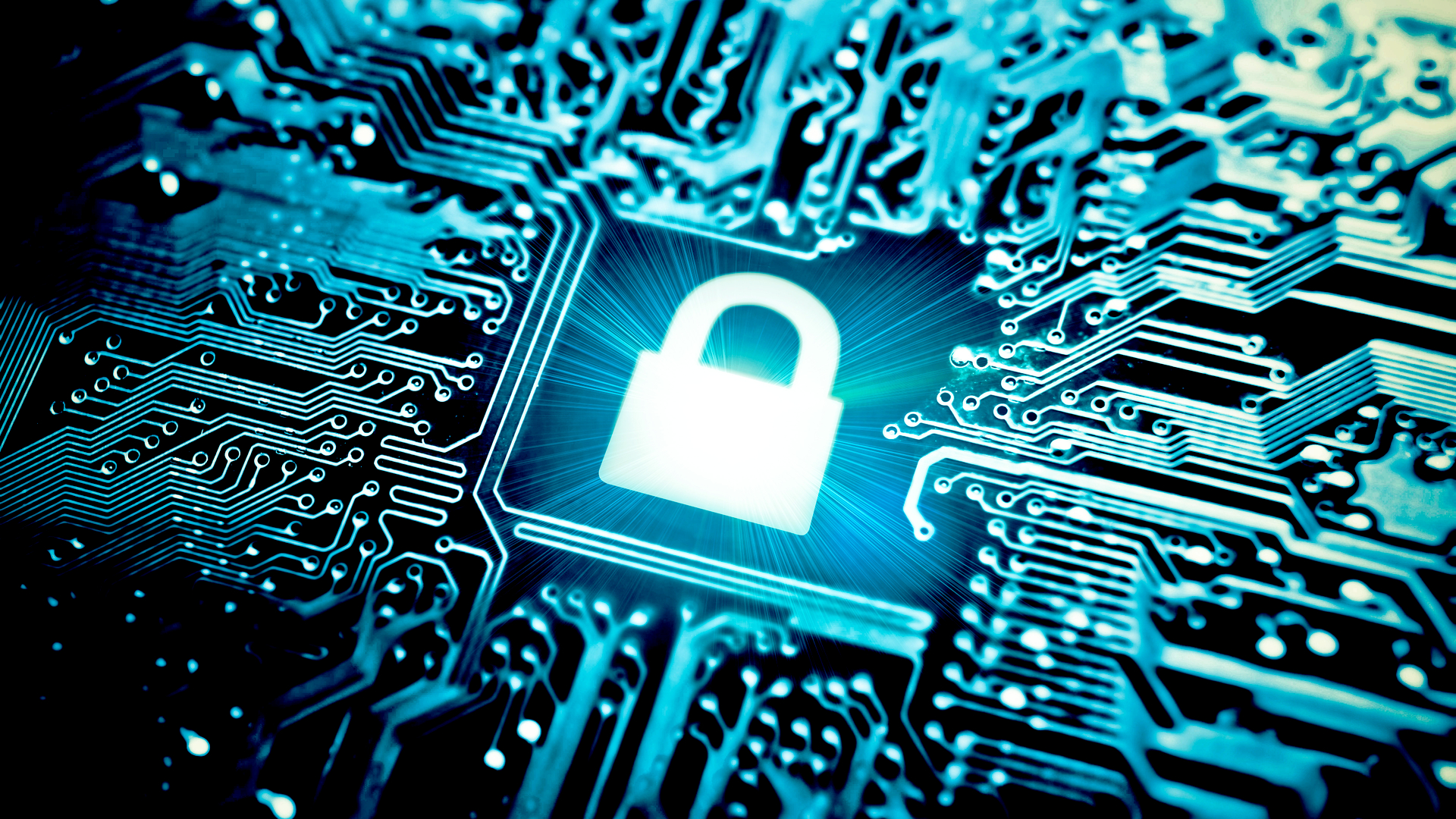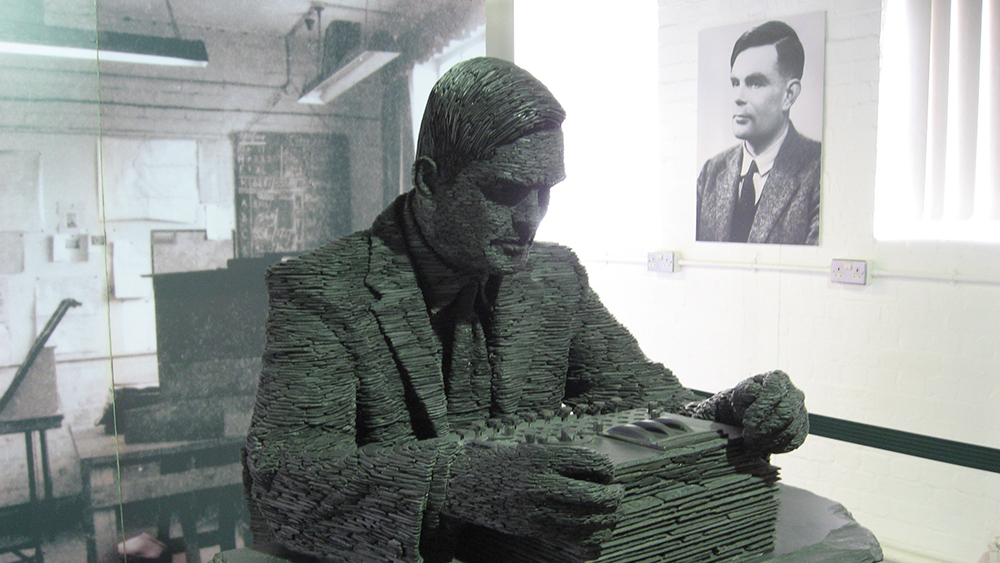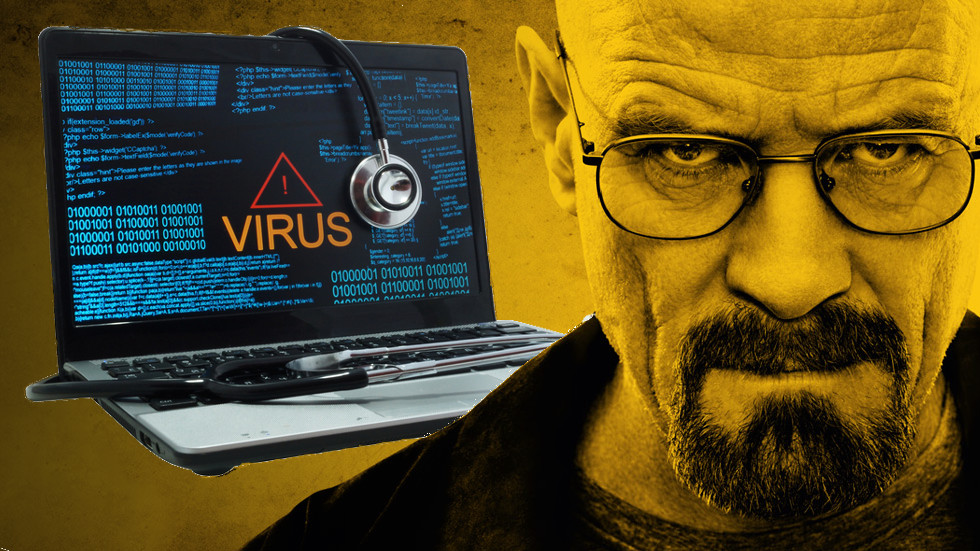IBM turns 100: The past, present and future
On the 100th anniversary of Big Blue, we take a look back at what it has achieved and look forward to what it could achieve.

Not many companies make it to their 100th anniversary. when it comes to technology companies, this is even fewer.
But some firms were there at the start of this technological age and have remained at the forefront for a century.
Today sees IBM celebrate its centenery and IT Pro looks at its history, its present and its future as one of the largest tech companies in the world.
The past...
For a company at the cut and thrust of the high-tech computing industry, IBM has a surprisingly long and storied history with quite humble, low-tech origins.
IBM's predecessors existed as far back as the 1880s manufacturing commercial tabulating machines, such as time clocks for tracking worker attendance. The Computing Tabulating Recording Company, or CTR, was the most direct antecedent and was founded on June 16th 1911. The name International Business Machines, or IBM, wasn't adopted until 1924.
During the 1930s and 1940s, IBM's punch card tabulating machines were used by both the American and German governments for various purposes, including the collection and maintenance of social security and census records. Its involvement with the German Government during this period would later cause much controversy during the 1990s, when its dealings came to light.
Get the ITPro daily newsletter
Sign up today and you will receive a free copy of our Future Focus 2025 report - the leading guidance on AI, cybersecurity and other IT challenges as per 700+ senior executives
IBM's entry into the computer market in the 1950s, which then consisted of selling room-sized machines to the US Government, universities and multinational businesses, is overshadowed by two major developments. The first was the world's first hard disk invented in 1956 a technology that is obviously still with us today. The second was FORTRAN, an incredibly influential programming language.
IBM's track record of innovation continued unabated through the 1960s where its computers were used by NASA during the Gemini and Apollo space flights. Even more dramatically, it invented the world's first RAM chip in 1966 without which today's affordable, compact and ubiquitous computers would be impossible.
More down to earth was the IBM Selectric typewriter, first unveiled in 1961, and the introduction of magnetic stripe cards, which made credit cards as we know them possible. The American SABRE airline reservation system, which still exists today and lies behind most online travel booking websites, was first established in 1962 on a pair of IBM 7090 mainframe computers.
IBM was slightly less dramatic in the 1970s with the invention of the first floppy disk, although the company's 8in disk looks comically large compared to the 3.5in disks most people remember today. The company was also responsible for pioneering relational databases and speech recognition software during this decade.
The world of retail was changed forever by the IBM's invention of the standardised barcode, or Universal Product Code, in 1979. Two years earlier in 1977 the company helped devise the Data Encryption Standard (DES) which was the US Government's encryption standard of choice until it was supplanted by AES at the turn of the millennium.
For most people IBM will be remembered for just one product: the IBM PC. Introduced in 1981, this DOS-based computer is the grandfather of today's Windows PCs. Many household names, such as Compaq - now part of HP - got their start producing clones of the IBM PC.
The company tried to make the PC more affordable and attractive to home users with the PCjr which was an infamous flop. Despite the PCjr, the DOS-based PC and its clones would eventually trounce almost all other competing computer platforms at the time, such as the Apple II and the Commodore Amiga among numerous others.
If the PC dominates people's memories of IBM during the 1980s then the ThinkPad line of laptops forms an integral part of IBM's popular image from the 1990s onwards. The range of business laptops was first released in 1992 and some ThinkPads are still the standard by which other laptops are judged here at IT Pro.
There was more to IBM than just ThinkPads during the 1990s though. IBM's services and consultancy business, which is now one of the cashcow pillars of the company, was first established in 1991.
The company also attempted to rival Intel's dominance of the processor industry with its PowerPC range, developed in partnership with Motorola. Aside from relatively niche markets, such as embedded applications and games consoles, and a stint as Apple's choice of chips for the Mac during the 1990s, the PowerPC never caught on.
Despite the success of the ThinkPad, IBM struggled financially during the 1990s, but eventually recovered under CEO Louis V Gerstner Jr, one of the most influential men at the company since the legendary Thomas Watson who managed IBM's transition from tabulating machine maker to computer titan from the First World War onwards.
Despite IBM becoming almost synonymous with personal computers during the 1980s and 1990s, the company sold its personal computer business, including its vaunted ThinkPad brand, to Chinese company Lenovo in 2005. This has turned out to be a smart move given the increasing commoditisation of the personal computer market, allowing IBM to concentrate on its profitable services division.
IBM is perhaps now best known for its range of supercomputers, long a bedrock of the company, in stunts such as defeating chess grandmaster Garry Kasparov. IBM's supercomputers are frequently used in scientific and military research which, in a way, brings the company almost full-circle back to the 1950s when its customers were governmental and academic users.
Present day...
IBM ruled the roost for a long time but in the 2000s fell out of favour as new internet companies took over technology. Where has this change left IBM now?
Surprisingly, it seems the economic downturn actually served the company well, but one would assume being around for 100 years would at least teach you how to ride the wave of boom and bust.
The headlines hit when IBM overtook Microsoft in Reuters' market share value listings last month for the first time since 1996. Although it still remained behind top of the pile Apple valued at $309.2 billion it snuck ahead of its old rival with a value of $203.8 billion Microsoft was valued at $203.7 billion.
But what about the company's own results breakdown?
In its first quarter report released in April 2011, the company showed a 10 per cent rise in net income to $2.9 billion, when compared to the same quarter last year, along with a rise of eight per cent for total revenues, equating to $24.6 billion.
Yet, it was the yearly results which impressed investors. Announced in January, the filing showed a seven per cent jump to reach $29 billion, leaving behind Wall Street estimates of $28.3 billion.
It was Big Blue's delve back into familiar territory that bolstered results, with the introduction of an updated System Z mainframe product. This saw sales in the division leap by an unprecedented 70 per cent year-on-year and, along with its new lines of servers and even its first foray into the NAS market, hardware kept IBM in the cash.
Of course, services and software cannot go without a mention, with the likes of its business analytics software revenues rising 19 per cent in 2010. This had clearly been IBM's focus for some time, which a number of analysts claimed detracted from what it did so well in hardware, but it is bringing the company solid revenues.
However, it is its hardware legacy, along with investments into new generations of these classics, that seems to have kept IBM well above sea level whilst others sank during the stormy recession.
The company's UK chief executive (CEO), Stephen Leonard, was a little more philosophical though. At an event in London last week to celebrate Big Blue's birthday, he claimed the core of IBM's success was three principles: adapting to the challenges of globalisation, responding to technology changes and retaining the essence of an organisation.
Be it as simple as well-known and well-trusted hardware or the more idealistic opinions of Leonard, 2011 is seeing IBM get back in the game.
Future gazing...
So what now for Big Blue? Looking at its strategy for the coming years, despite its mainframe successes, it will continue along the same path it has been for the past decade - focusing more on services and software, less so on hardware.
In its recent visit to IBM's London headquarters, IT Pro heard the tech giant reiterate its 2015 roadmap, in which it will drive growth by focusing on three core areas: Smarter Planet, cloud and business analytics.
It was the same roadmap IBM outlined in the first half of 2010, so the company is clearly sticking to its guns.
The idea behind the Smarter Planet initiative is to help private and public companies take advantage of the abundance of data available to them. As Leonard explained to us, the Smarter Planet idea is designed to help companies enjoy business rewards, whilst providing social and environmental benefits too.
This strand of the three-pronged strategy builds into business analytics - something IBM is banking on to be a real revenue earner. It will also be a market in which IBM will need to shine as it's getting awfully busy, with the likes of Oracle pushing out some serious kit.
"When most people think of business analytics, they think of the ability to look within their financial model to see how they can optimise around the financial model. We're talking about something completely different," Leonard said.
"We're talking about how you can take that type of technique and apply it to the systems that run inside your organisation. This is the concept of looking at your organisation through a different dimension."
In the coming years, IBM will look to dominate the predictive analytics space, focusing on assisting firms respond to future events.
As for cloud computing, it's clear the sector is going to be huge. It's equally clear the long-term future (we're talking the next 50 years or so) is going to be very cloudy indeed for IBM. The company already does plenty in this space, spreading its net fairly wide from security offerings and transitional services, to private cloud storage.
Yet despite all IBM's claims it is continuing in the software and services direction, it still sees solid gains from more corporeal goods. As noted, in the company's financial results from January, it reported a spike in sales from its traditional mainframe hardware. So expect continued concentration on providing mainframe kit, as it's still a valuable part of IBM's business.
Acquisitions will remain key at the firm too it's already allocated $20 billion for purchases up to 2015. As for what spaces they'll invest in outside of analytics and cloud, a security firm wouldn't be a bad bet as it looks to gain ground on the specialist players in the market like Trend Micro, McAfee and Symantec.
IBM will also have to do what every tech business does remain agile to deal with the capricious nature of the tech world. IBM should be ready for the transience of the IT landscape to take advantage of opportunities when they arise.
"IBM has a plethora of other challenges including disruption by technology and competition, consumerisation of IT, government regulation pushed in part by non-governmental organisations (NGOs), and obsession with financial results that cause it to fail other stakeholders," said Ovum chief analyst Carter Lusher.
"While we celebrate IBM's centenary, it is critical to think about how this vendor will adapt in the future. Three CEO cycles, countless changes in the tech fad du jour, climate change, politicians and NGOs wanting IBM to do things that make no business sense, are all challenges and opportunities it will face over the next 20 years."
Lusher suggested IBM should focus what it does best: providing for the business needs and opportunities of its customers. It's hard to argue with that.
Congratulations on your centennial IBM we hope you help businesses thrive for the next 100 years and beyond.
ITPro is a global business technology website providing the latest news, analysis, and business insight for IT decision-makers. Whether it's cyber security, cloud computing, IT infrastructure, or business strategy, we aim to equip leaders with the data they need to make informed IT investments.
For regular updates delivered to your inbox and social feeds, be sure to sign up to our daily newsletter and follow on us LinkedIn and Twitter.
-
 Bigger salaries, more burnout: Is the CISO role in crisis?
Bigger salaries, more burnout: Is the CISO role in crisis?In-depth CISOs are more stressed than ever before – but why is this and what can be done?
By Kate O'Flaherty Published
-
 Cheap cyber crime kits can be bought on the dark web for less than $25
Cheap cyber crime kits can be bought on the dark web for less than $25News Research from NordVPN shows phishing kits are now widely available on the dark web and via messaging apps like Telegram, and are often selling for less than $25.
By Emma Woollacott Published
-
 ThreatLabz Report: The state of encrypted attacks
ThreatLabz Report: The state of encrypted attacksWhitepaper What's hiding in your web traffic?
By ITPro Published
-
 How to encrypt files and folders in Windows 10
How to encrypt files and folders in Windows 10Tutorials Here’s how to make your sensitive data unreadable to prying eyes
By Dale Walker Last updated
-
 The government needs to abandon its war on WhatsApp
The government needs to abandon its war on WhatsAppOpinion Encryption might seem like an easy target, but mess with it at your peril
By Adam Shepherd Published
-
 Watch: Now this is how you securely erase data
Watch: Now this is how you securely erase dataIn-depth Delete your data properly - by smashing your laptop to pieces
By Adam Shepherd Published
-
 Alan Turing's computer-generated music gets restored after 65 years
Alan Turing's computer-generated music gets restored after 65 yearsNews Decades later, you can now hear the true sound of Turing's computer
By Lee Bell Published
-
 Two laptops are lost on the tube every day, says TfL
Two laptops are lost on the tube every day, says TfLNews Number of lost devices has shot up by almost 80 per cent since 2010
By Adam Shepherd Published
-
 Social networks should report suspicious users, says spy boss
Social networks should report suspicious users, says spy bossNews MI5 director general calls for updated surveillance powers
By Rene Millman Published
-
 Symantec finds Breaking Bad-themed ransomware
Symantec finds Breaking Bad-themed ransomwareNews Better call Saul, because these hackers may have encrypted your data
By Adam Shepherd Published
